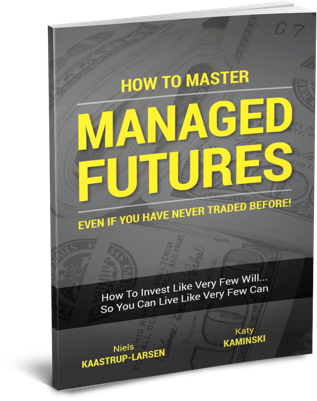Global Investment Returns Yearbook: Lessons from 125 Years of Data

- U.S. market dominance may feel like a constant, but history shows it’s more of an exception than the rule.
- Bonds, which are often seen as the safe part of a portfolio, have delivered some of the longest and most painful losses in real terms.
- Long-term investing only works if your portfolio are built to withstand the full cycle, not just the good years.
In investing, the biggest risks are usually hidden behind what feels familiar. We get comfortable with patterns that have worked: the U.S. always leads, stocks always recover, and bonds always protect. The longer those patterns persist, the more we convince ourselves they’re not trends at all, but facts of life. But history doesn’t reward certainty. It rewards preparation.
For over 20 years, the Global Investment Returns Yearbook has tracked the performance of stocks, bonds, inflation, and interest rates across more than 20 countries, leveraging 125 years of data. Its lead author, Elroy Dimson of Cambridge University, has studied — along with UBS strategist Kiran — how markets behave over generations, not just cycles or headlines. Their work doesn’t offer forecasts. It offers perspective, and it may be exactly what investors need now.
America’s Winning Streak May Be Just That: A Streak
Since 1900, U.S. equities have been an incredible engine of wealth. The returns have been world-beating despite wars, crashes, and recessions. But the data shows that’s the exception and not the rule. Many investors now treat U.S. dominance as a permanent condition. But most countries didn’t enjoy a century of compounding. Some endured long, painful stretches — 30, 40, even 50 years — before equity returns became positive in real terms. In other words, entire investing lifetimes were spent just getting back to zero.
That’s the hidden danger of home bias. It’s about probability, not patriotism. Betting entirely on one country means betting your future on a single path. It might work out, but will your portfolio be ready if the next Apple or Nvidia comes elsewhere?
Ganesh puts it this way: “We have to be somewhat humble about our ability to predict, over the next hundred years, what are going to be those dominant companies of the future and in which country they will reside.”
Bonds Can Fail Quietly, and for a Very Long Time
If equities are a roller coaster, bonds are supposed to be the seatbelt. They’re meant to keep the ride survivable. But over the last 125 years, bonds haven’t always worked as advertised.
“The recovery time for equity markets after a big setback,” Dimson notes, “has been shorter than the recovery time from bonds.”
That’s because bonds can quietly erode purchasing power for years. Especially when inflation is high or interest rates are rising. Many investors learned this the hard way in 2022, when stocks and bonds fell sharply, which hadn’t happened in decades. From 1980 to 2020, falling interest rates created a golden age for bondholders. But that stretch, the data shows, was an outlier. Bonds didn’t hedge; they benefited from a unique environment that no longer exists. Put simply, bonds can still offer safety, just not always the kind investors think.
Long-Term Isn’t a Slogan. It’s a Strategy
The most powerful insight from 125 years of data is also the most overlooked: long-term investing only works if you can stay actually invested for the long term. There’s a difference between saying you’re long-term and being built for it, especially when all the headlines are gloomy and panic is widespread. That difference is revealed in downturns, when prices fall, narratives shift, and discipline is tested. In some countries, it took decades to recover real losses. That’s an uncomfortable truth.
“There are countries,” Dimson reminds us, “where you would have been waiting 50, 60, 70 years just to break even.”
Of course, this doesn’t mean we abandon equities. It means we structure our portfolios and our lives so that we don’t become forced sellers at the wrong time. It also means accepting that the biggest edge in investing may not be IQ or access. As greats like Warren Buffett and Howard Marks have said over and over: It’s patience, the ability to hold when others fold. It’s knowing what you own, why you own it, and what you’ll do if it drops 40% this year.
That’s the kind of long-term thinking that actually works, not because it’s optimistic, but because it’s resilient. Time tested, too.
Why It Matters
The last 25 years have been kind to investors. U.S. stocks surged, bonds hedged, passive strategies outperformed. But the century before that tells a more complicated story: It tells us that markets don’t move in straight lines, that leadership changes, that comfort is not the same as safety, and that the future will surprise us, sometimes brutally.
The investors most likely to thrive in the years ahead won’t be the best predictors. They’ll be the best positioned. They’ll hold portfolios built not for one scenario, but for many. They’ll understand that every streak ends, and that survival is underrated.
After all, it’s not always about beating the market. It’s about staying in the game long enough to benefit from it.
This is based on an episode of Top Traders Unplugged, a bi-weekly podcast with the most interesting and experienced investors, economists, traders and thought leaders in the world. Sign up for our Newsletter or subscribe on your preferred podcast platform so that you don't miss out on future episodes.
Most Comprehensive Guide to the Best Investment Books of All Time

Most Comprehensive Guide to the Best Investment Books of All Time
Get the most comprehensive guide to over 500 of the BEST investment books, with insights, and learn from some of the wisest and most accomplished investors in the world. A collection of MUST READ books carefully selected for you. Get it now absolutely FREE!
Get Your FREE Guide HERE!




